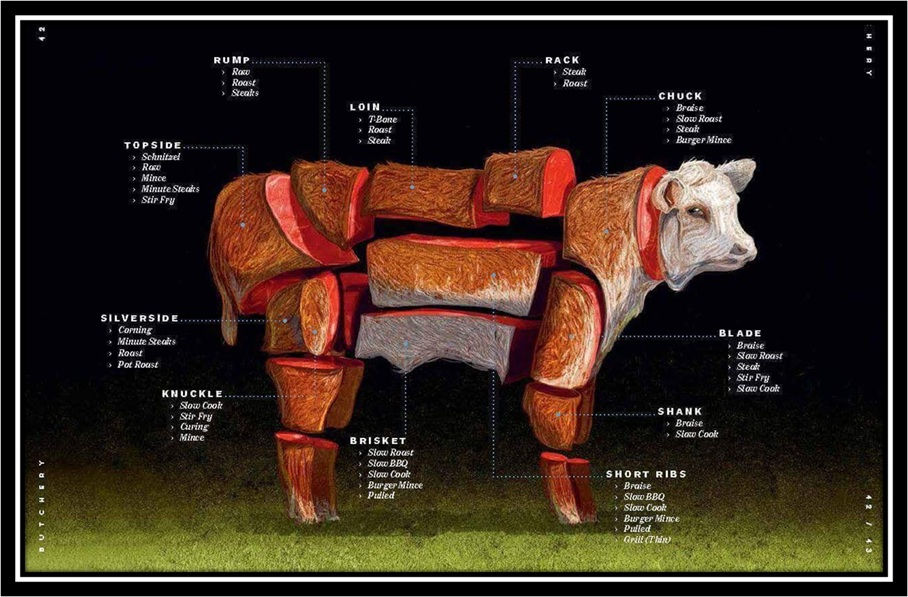Understanding Beef Cuts: A Guide to the Cow Diagram
- sebasjaraji
- Sep 12
- 2 min read
When it comes to beef, every cut tells a story. Each section of the cow provides unique textures, flavors, and cooking possibilities. The diagram above illustrates the primary cuts of beef, showing exactly where your favorite steaks, roasts, and braising pieces come from.

Main Beef Cuts and Their Uses
Rump
Known for being lean yet flavorful, rump cuts are perfect for roasts and steaks.
Topside
A versatile section ideal for schnitzel, roasts, mince, and stir fry.
Silverside
Commonly used for corning, pot roasts, and roasting. It also provides tender minute steaks.
Knuckle
This hardworking muscle is excellent for slow cooking, stir fry, curing, or mincing.
Brisket
Famous worldwide for BBQ, brisket is best when cooked low and slow. It can also be minced for burgers or shredded for pulled beef.
Short Ribs
A richly marbled cut, perfect for braising, grilling, or smoking. Short ribs are also popular in thin cuts for grilling.
Shank
Taken from the leg, shank is full of connective tissue, making it ideal for braising and slow cooking.
Blade
Located near the shoulder, this cut can be used for steaks, slow roasts, stir fries, and braising.
Chuck
A flavorful section suited for braising, slow roasts, steaks, and burger mince.
Rack & Loin
Some of the most prized cuts come from here, including T-bone steaks, roasts, and premium steaks.
Why This Matters
Understanding beef cuts helps you choose the right cooking method and ensures the best dining experience. Whether you want a tender steak, a flavorful roast, or melt-in-your-mouth BBQ, knowing where each cut comes from makes all the difference.
At Col Foods Co, we believe in connecting customers with the finest beef selections, sourced responsibly and prepared with care.

Comments